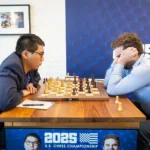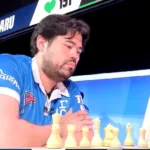Castling is one of the most unique and important moves in chess. It’s the only move where two pieces—your king and one of your rooks—move at the same time. And while it looks simple, there are several rules you must follow. Get it right, and you can protect your king and bring a rook into the game in one smooth move.
In this article, we’ll walk you through what castling is, when you can do it, when you can’t do it, and why it’s such a powerful part of your strategy.
What Is Castling?
Castling is a special move that lets you do two things at once:
- Move your king two squares toward a rook.
- Move that rook to the square the king skipped over.
It’s the only time in chess where the king can move more than one square and two pieces move in a single turn.
There are two types of castling:
- Kingside castling (also called short castling), where you castle with the rook closer to the king.
- Queenside castling (long castling), where you use the rook on the queen’s side of the board.
Both follow the same basic rules, but they can lead to different positions and strategies.
How to Castle
Here’s how it looks in action:
- Kingside:
King goes from e1 to g1, rook goes from h1 to f1 (for White).
For Black: king from e8 to g8, rook from h8 to f8. - Queenside:
King goes from e1 to c1, rook goes from a1 to d1 (for White).
For Black: king from e8 to c8, rook from a8 to d8.
To perform the move over the board, pick up your king first and move it two squares, then place the rook on the square the king crossed over. If you’re playing online, just drag the king two squares toward the rook, or move the king to the rook. It should do the rest for you.
When Can You Castle?
You can castle only if all the following conditions are true:
- Neither the king nor the rook has moved earlier in the game.
- There are no pieces between the king and rook.
- The king is not in check.
- The king does not move through a square that is under attack.
- The king does not end up on a square under attack.
These rules may seem strict, but they’re there to prevent you from dodging threats too easily. Castling is a reward for good development and timing.
Common Misunderstandings ❌
Castling is where many beginners trip up. Let’s clear up some common myths:
- ✅ The rook can be attacked during castling. That’s fine, as long as the king isn’t in check, passing through check, or ending up in check. (We explain this in detail in our guide: Can You Castle When in Check?)
- ❌ You can’t castle out of check. If your king is already in check, you must block, capture, or move the king—not castle.
- ❌ You can’t “castle through check”. If any square the king passes through (such as f1 during kingside castling) is under attack, castling isn’t allowed.
- ❌ You can’t castle after your king or rook has moved, even if they move back to their original positions.
When Should You Castle?
Here are some reasons why castling is more than just a formality:
- King Safety: It tucks your king away behind pawns, making it harder to attack.
- Rook Activation: It brings your rook closer to the center, where the action usually happens.
- Development Bonus: It often connects your rooks and completes your opening phase.
In most games, castling early (but not too early) is a sign of sound strategy. But sometimes, delaying castling or castling to the queenside may surprise your opponent or better match your plans.
Castling in Freestyle Chess (Chess960): Same Idea, Wild Execution
In Chess960, castling is still a king safety tool, but you’re still allowed to move your king and rook in one turn. But because the pieces aren’t in their standard spots, the path and starting squares are often different.
However, the destination is always the same as in classical chess:
- Kingside castling: King ends up on g1/g8, rook ends up on f1/f8.
- Queenside castling: King ends up on c1/c8, rook ends up on d1/d8.
So no matter where the king and rooks begin, the final layout is identical to standard chess castling. That’s the key to remembering how it works.
You can castle in Freestyle Chess (also known as Chess960 and Fischer Random) if these rules are followed:
- The king and the rook involved haven’t moved.
- All the squares between the king and rook are empty (except for the king and rook themselves).
- The squares the king crosses and lands on aren’t attacked.
- The king is not currently in check.
The big twist: Since the starting squares are different, the king might move one square or three squares, and the rook might cross over the king depending on the setup.
Yes, it can look strange. But it’s all legal as long as the result looks like regular castling when the move is complete.
I’m the senior editor of Attacking Chess, a keen chess player, rated above 2300 in chess.com. You can challenge me or asking questions at Chess.com.







5 thoughts on “Castling in Chess: What It Is and How It Works”
Comments are closed.